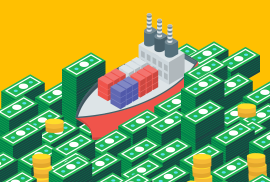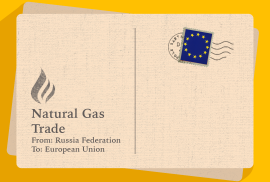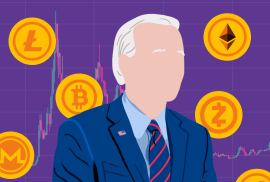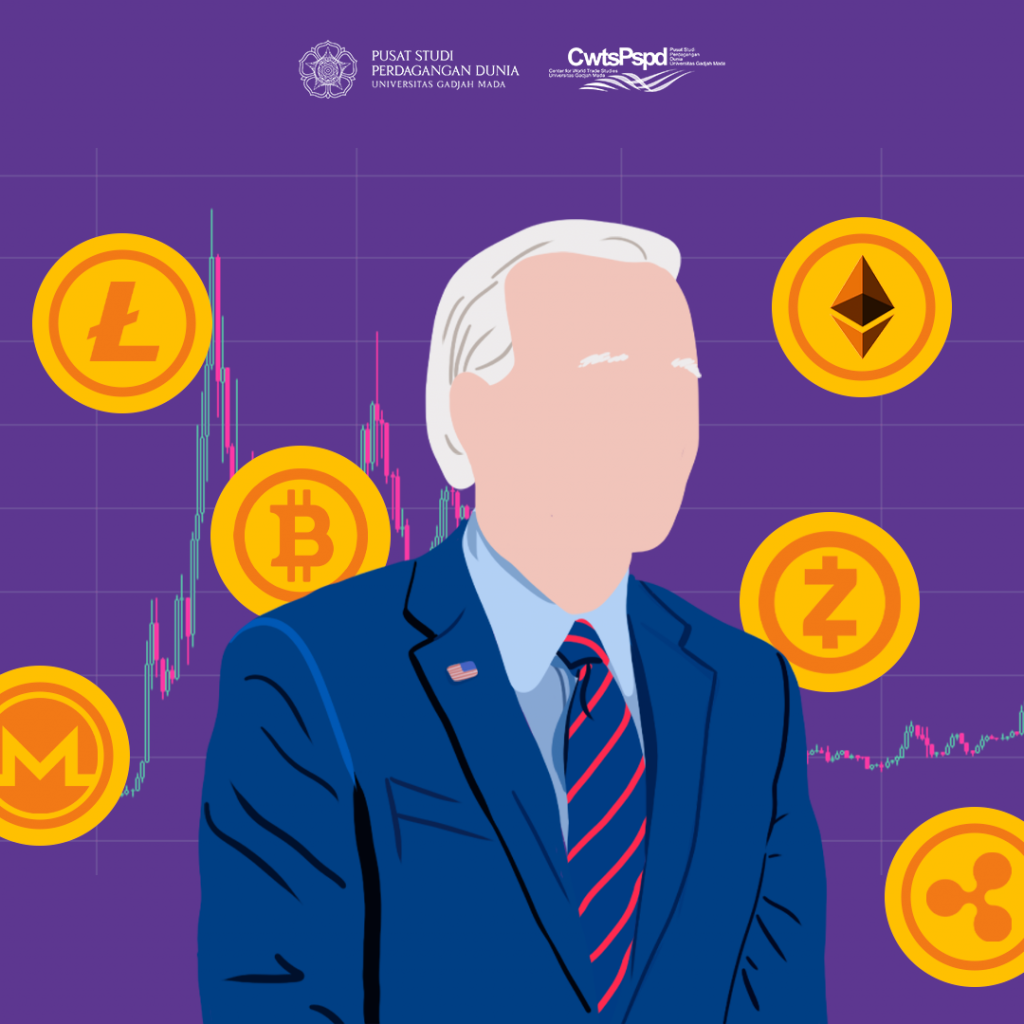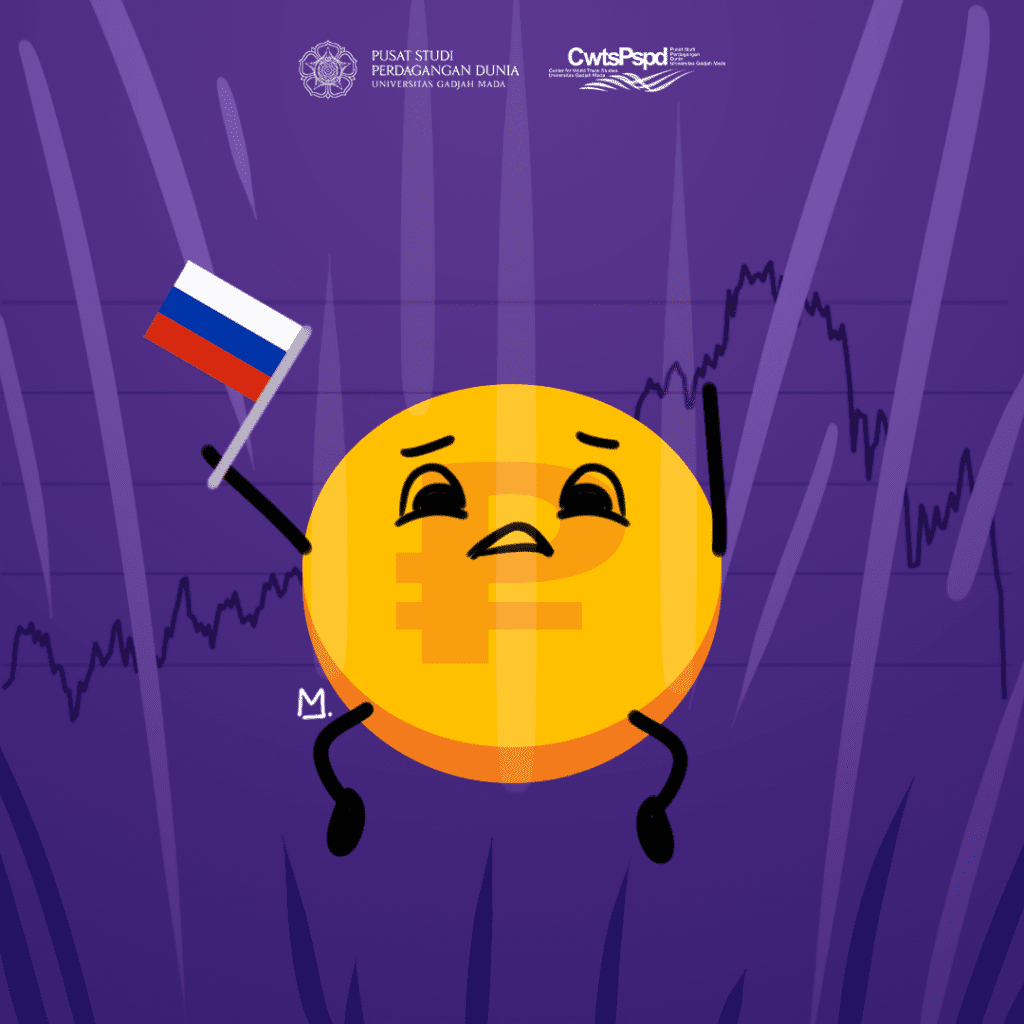Maritime Transport: The Backbone of International Trade Activities
Uncategorized Monday, 18 April 2022
Maritime Transport: The Backbone of International Trade Activities

Writer:
Raevita Andriessa
SEO Content Writer, Center for World Trade Studies Universitas Gadjah Mada.

Editor:
Ameral Rizkovic
Website Manager, Center for World Trade Studies Universitas Gadjah Mada.

Editor:
Nabila Asysyfa Nur
Website Content Manager, Center for World Trade Studies Universitas Gadjah Mada.

Illustrator:
Narinda Marsha Paramastuti
Graphic Designer, Center for World Trade Studies Universitas Gadjah Mada.
Recently, the public got thunderstruck by a report that went viral about a cargo ship that got stranded in the Chesapeake Bay. On March 13, 2022, the Ever Forward ship, a fleet member of the Evergreen Marine Corp. reportedly got stuck in the shallow waters of Chesapeake Bay. According to NPR, Ever Forward was departing from Baltimore after loading their cargo when the crew miscalculated the ship’s navigation. Eventually, the Ever Forward arrived in Chesapeake Bay and was stuck in shallow waters near the beach for four weeks. Various efforts have been made to set this cargo ship free so that it will be able to sail as per normal in accordance with the trade routes. However, until this exact day, the ship still shows no avail of going back on the sail and still remains stranded in the Chesapeake Bay.
Although it did not cause any loss and damages to other cargo ships, this incident caused delays in the supply of raw materials and products of essential commodities for life due to the time-consuming ship rescuing attempts. As reported by CBS News, the Ever Forward ship currently wields 5000 containers on the deck and by being stuck in the same position for a month, they have caused a loss of 1 billion USD per day. In order to avoid a greater amount of loss, the crew and the Chesapeake Bay coastal guards took the initiative to evacuate the containers using another ship for immediate distribution to respective recipients.
The incident that happened to Ever Forward again made the public aware that maritime transportation is crucial in supporting export and import activities in trade. Export and import activities are essential processes in international trade to channel the produced commodities to consumers in order to meet their daily needs. To make the whole process more efficient, transportation facilities are required, especially sea transportation which has been deemed to be the most efficient transportation for various types of products at the same time.
Quoted from a press release on the UN's official website, Former UN Secretary General, Ban Ki Moon conveyed the importance of maritime transportation in the realm of international trade in his speech on September 29, 2016, coinciding with World Maritime Day. Ban Ki Moon stated that maritime transportation is the backbone of global trade activities. Maritime transportation helps ensure that the benefits of trade are more evenly distributed due to its large capacity and relatively lower costs compared to other types of transport. In addition, the shipping industry has also played an important role in the improvement of global living standards that have brought millions of people out of acute poverty in recent years. This article will discuss further about the importance of maritime transportation in the world of international trade.
Importance of Maritime Transport in Trade
Barely any economic activity and industrial sector in the world can last for an eternity without the involvement of maritime transport in their export and import activities. This statement was reinforced by the International Chamber of Shipping (ICS) which explained that the international maritime transportation industry is responsible for the transportation of around 90% of commodities produced from world trade activities. In this figure, 80% of them are commodities destined for export and import activities. The statement implies that trading activities are completely dependent on sea transportation which is an important component to drive their economic activities.
ICS also stated that among the 90%, there are 11 billion tons of commodities transported by cargo ships every year, of which 1.5 tons represent the necessities of life for every single person in the world per year. Every year, the shipping industry transports nearly 2 billion tons of crude oil, 1 billion tons of iron ore, and 350 million tons of wheat, where these raw materials are the basic ingredients of almost all basic human needs such as clothing, food, and shelter. This proves that a person's survival is highly dependent on world trade activities, especially on the process of export and import through maritime transportation.
In addition, ICS also mentioned that currently, there are more than 50,000 international cargo ships that carry every type of commodity in their cargo capacity. There are 150 countries in the world that have a fleet of registered cargo ships as a means of distributing commodities in the economy. In addition, each existing fleet employs more than one million human resources from almost every country. The statement elaborates that the maritime transportation industry in expedition activities is strongly supported by its existence to keep world trade activities alive.
What Happened the Year Before
During this year, the world of commerce and the general public was shocked by news about cargo ships that got stuck in the waters where they sailed. Prior to the stranded incident of the Ever Forward ship in the Chesapeake Bay, there was an incident that happened to another Evergreen ship, where this incident was considered far more fatal. Reporting from The Washington Post, at the end of March 2021, one of the Evergreen Marine Corp. ships, Ever Given, was reportedly caught in the Suez Canal which caused a blockade of the canal for 6 full days. The blockade caused by the snagging of the giant carrier managed to disrupt the shipping activities of more than 300 ships, so that some ships were forced to take alternative routes, requiring them to circle the African continent to reach Asia and increase their sailing time by three weeks.
Reporting from CNBC, the amount of losses borne by Evergreen Marine Corp. After experiencing this incident, of course, not a few, because not only their companies suffered losses, but also the economy around the world. Despite paying a fine that includes compensation for damage and loss of revenue for the Suez Canal, as well as rescue costs totaling $916 million, Evergreen Marine Corp. cannot immediately restore the state of world trade as before. The losses caused by the entanglement of Ever Given to the world economy did not only last a day or a week after that, but the impact was felt for months.
According to Business Insider, the losses caused after the Ever Given snagged were estimated at 400 million USD per hour. Lloyd's List, a shipping news journal based in London, estimates the value of cargo goods passing through the canal daily at an average of 9.7 billion USD, with a total of 5.1 billion USD moving into the western hemisphere and 4.6 billion USD moving into the western hemisphere. moving to the eastern hemisphere. Multiplied by more than 300 other cargo ships, of course this number of losses is not something trivial. This event affects global supply chains that have been struggling with shortages and delivery delays since the pandemic began in 2020.
Maritime transportation is the best transportation option for distribution activities in world trade in terms of its function. As the main driver of commodity distribution activities in international trade, human needs are almost entirely dependent on the smooth running of the process. However, if trading activities involving maritime transportation are disrupted while carrying out their functions, the losses incurred will be fantastic. In the future, maritime transportation companies must be better prepared to face situations that can endanger international trade flows.

